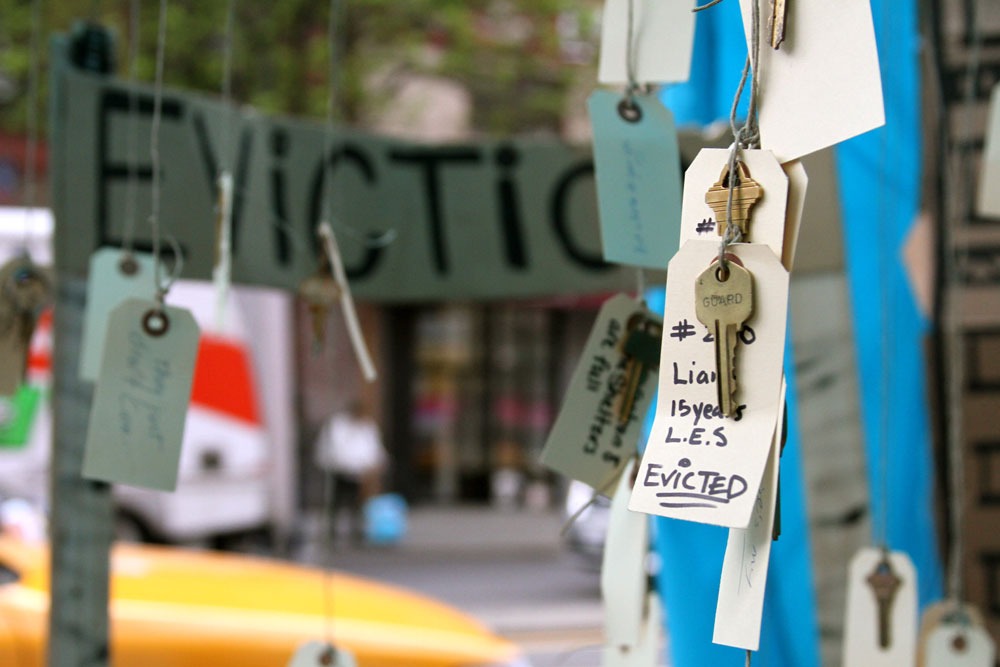
July 24, 2020; Shelterforce
It seems like a fate too awful to contemplate: Millions of Americans potentially losing their residences in the fall, at the same time that a feared “second wave” of the COVID-19 pandemic hits, possibly simultaneously with an uptick in flu cases. How do you “shelter in place” if you don’t have a place? The answer, of course, is “not easily.”
And while this may seem like some bad Hollywood disaster movie script that a year ago would have been rejected out of hand for being too implausible, the pending eviction train wreck continues to gain momentum.
As Josh Cohen writes in Shelterforce, “The clock is ticking for Americans who are struggling to pay rent amid the fallout of the COVID-19 pandemic.” Not only did the federal eviction moratorium—which protected about one-quarter of American renters—expire July 24th, but many state and local eviction moratoriums have also ended, with more slated to end soon.
The Census Bureau’s weekly survey of American households shows that today 26.5 percent of US families are reporting housing insecurity, meaning they already have missed a rent or mortgage payment and/or expect to be unable to meet the next one.
In June, three Aspen Institute researchers estimated that between 19 million and 23 million renters are at risk of eviction by the end of September, unless the US government intervenes. In contrast, in 2016 (the most recent year with data available) there were 3.7 million eviction filings, according to Princeton University’s Eviction Lab. And yes, there probably were more than 3.7 million evictions in 2016, since many evictions happen without a court filing. Even so, the potential 2020 number is staggering.
Sign up for our free newsletters
Subscribe to NPQ's newsletters to have our top stories delivered directly to your inbox.
By signing up, you agree to our privacy policy and terms of use, and to receive messages from NPQ and our partners.
Increasingly, local communities are taking notice. In Waco, Texas, Sheryl Swanton, managing attorney at Lone Star Legal Aid, a nonprofit law firm that serves a seven-county region, tells the Waco Tribune that her office has not been flooded as Houston has been. But she adds that there definitely has been an “uptick” in eviction cases, and she expects more after the 30-day notification period passes on CARES Act formerly protected properties—that is, after August 24th.
In southwestern Kentucky, the Paducah Sun reports, “An analysis from global advisory firm Stout Risius Ross found that “44.26 percent of Kentucky’s renters and homeowners—some 221,000 households—are at risk with as many as 149,000 estimated total evictions in the next four months.”
“I’m looking at this data and watching the United States careen towards the edge of this cliff and there are no guardrails,” Emily Benfer, a Wake Forest University law professor and co-author of Eviction Lab’s COVID-19 Housing Policy Scorecard tells Cohen. “We cannot stand by as millions of households are about to enter this state of complete devastation. It will take generations to recover from.”
Even if just 10 percent of the 23 million people at risk of eviction were to end up experiencing unsheltered homelessness, that would mean 2.3 million new homeless people. In its 2019 Point in Time count, HUD counted a little over 567,000 homeless US residents in 2019, including those living in shelters and other nonpermanent housing.
And of course, while creative solutions (such as using hotels and convention centers to provide housing) have emerged amid COVID-19, it is worth noting that the pandemic’s physical distancing public health requirements reduce existing shelter capacity. For instance, back in May, NPQ highlighted a housing shelter in Escondido, California (near San Diego) that had to reduce its capacity from 49 people to 20 people.
Cohen writes that during the Great Recession, due to federal intervention, homelessness remained nearly flat between 2009 and 2011. But of course, as NPQ has noted often, the economic shutdown this time is far more severe. Cohen cites an article in the Journal of Urban History, which recalls that a three-day census taken by the Roosevelt administration in 1933 found that 1.5 million Americans were homeless, at a time when the nation’s population was just over 125 million.
Back then, the nation’s homeless encampments gained a name: Hoovervilles. Cohen writes that if federal intervention does not occur this time around, “The only question that remains is whether America’s newly homeless will call their encampments Trumptowns or McConnellvilles.”—Steve Dubb













